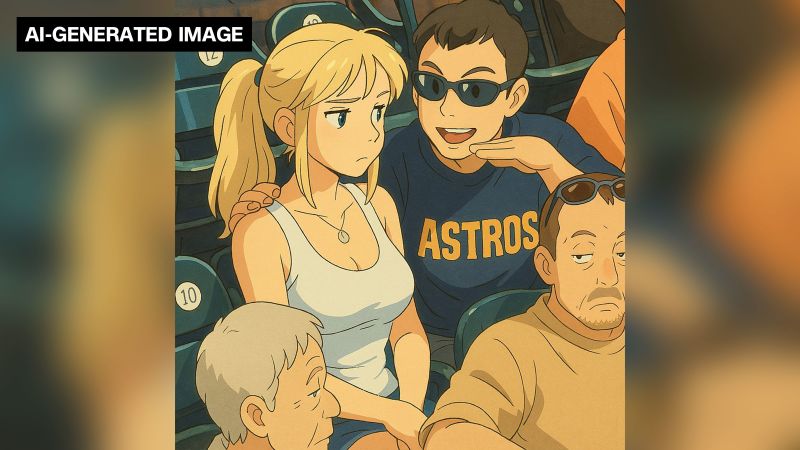Studio Ghibli AI Art: Copyright Concerns Emerge
The enchanting worlds of Studio Ghibli, famed for classics like Spirited Away and My Neighbor Totoro, are facing an unexpected challenge: the rise of AI-generated art. While the breathtaking visuals continue to captivate audiences worldwide, the use of Ghibli's iconic characters and styles in AI-generated art is raising serious copyright concerns. This burgeoning trend highlights a complex legal and ethical battleground where artistic innovation collides with intellectual property rights.
The Allure and the Issue
AI art generators, fueled by massive datasets of existing images, are capable of producing stunning pieces reminiscent of various artistic styles. Unsurprisingly, the distinctive aesthetic of Studio Ghibli has become a popular prompt, resulting in a surge of AI-generated artwork featuring Totoro, Chihiro, and other beloved characters. However, this ease of creation directly challenges the copyright held by Studio Ghibli.
The core issue lies in the nature of copyright protection. Copyright protects the expression of an idea, not the idea itself. While an AI might generate an image reminiscent of a Ghibli film, the question remains: does it constitute a derivative work, infringing on Studio Ghibli's copyright? This is a legal gray area that is yet to be fully explored.
Legal Ramifications and Precedents
The legal landscape surrounding AI-generated art is still evolving. There are no clear-cut precedents specifically addressing the use of copyrighted material to train AI models and generate derivative works. However, existing copyright law provides some framework. The unauthorized reproduction, distribution, or creation of derivative works based on copyrighted material is generally prohibited.
Several factors complicate the situation:
- The training data: AI models are trained on vast datasets, often containing copyrighted material. Determining liability when a generated image incorporates elements from copyrighted works is challenging.
- The level of similarity: The question of how closely an AI-generated image resembles the original copyrighted work is crucial in determining infringement.
- Transformative use: The concept of "transformative use" – where a new work adds significant creative elements, transforming the original work – might play a role in future legal battles.
Studio Ghibli's Response and Future Implications
While Studio Ghibli hasn't issued an official statement specifically addressing AI-generated art, their consistent protection of their intellectual property suggests they are likely monitoring the situation closely. The studio’s rigorous control over its brand and imagery indicates a potential for legal action against unauthorized use.
This situation highlights broader concerns surrounding AI-generated art and its impact on artists and copyright holders. The ease with which AI can generate art in the style of existing works raises questions about fair use, originality, and the value of human creativity.
The Path Forward
Navigating this legal and ethical minefield requires careful consideration from all stakeholders. Clearer legal frameworks, improved mechanisms for identifying and addressing copyright infringement, and a broader societal dialogue on the implications of AI-generated art are crucial. Artists and creators need protection against the unauthorized use of their work, while innovation in AI technology must respect existing intellectual property rights.
The future of AI-generated art hinges on striking a balance between technological advancement and the preservation of artistic integrity and copyright protection. The case of Studio Ghibli's art serves as a powerful illustration of the challenges ahead.
Call to Action: What are your thoughts on the use of AI to generate art in the style of copyrighted works? Share your opinions in the comments below. Let's discuss the ethical and legal implications of this evolving technology.

